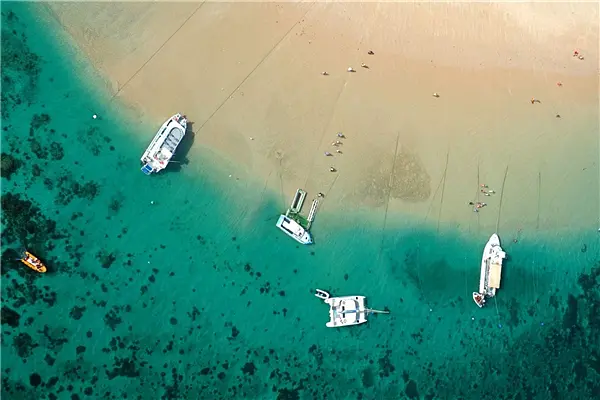Australia’s reefs
To the Barrier … and beyond
With Sir David Attenborough espousing its delights in hislatest BBC documentary series, theGreat Barrier Reef– made up of the 1,400-mile string of islands, coral reefs and sand cays off the Queensland coast – is ready for the rush. One of Attenborough’s programmes features the giant manta rays of Lady Elliot Island, 50 miles from Bundaberg (a four-hour drive from Brisbane), and visitors can check them out on a stay at the island’seco-resort(twins from £83pppn).
Another option is to nip over to Lady Musgrave Island on anew catamaranfrom Bundaberg (day tour £100) or pack a tent to make like a castaway onLady Musgrave, the Whitsunday or Lizard islands(permit £3pp). Or try glam hostelRambutan, which opened recently adjacent to the reef in Townsville (dorm beds from £14, rooms from £60).
Alternatively, head for Ningaloo Reef on Australia’s north-west coast, which attracts far fewer tourists than the Great Barrier and has plenty to offer. At its southern end is the superbly remoteGnaraloo Sheep Station, where you can volunteer on operations such as protecting turtle nests, or use it as a base for fishing, surfing (some of the best breaks in the world are here) and snorkelling (camping £9, cabins from £17). Further north, in Exmouth, a number of operators offer swimming with whale sharks, but now licences have been issued for swimming with humpback whales too: around 30,000 of them annually migrate along the coast.Charter1offers whale swim trips from £190. Tours will run from June to October. Another newcomer is a kayak trail with moorings and free campsites along the coast, with the best snorkelling sites pin-pointed.Capricorn Sea Kayakinghas a three-day trip from £487.
**Bordeaux
**
The new world wine capital?
With its wide boulevards and neoclassical buildings on the banks of the Garonne, Bordeaux has never been short of ambition. Now the centre of the region that produces the biggest volume of fine wines in France wants to be known as the wine capital of the world. And it’s staking its claim with the opening in June of an ultra-modern museum,La Cité du Vin, “exploring the evolution of wine and honouring all vintages of the planet”.
Already dubbed the “Guggenheim of wine”, the futuristic, glass-clad, curved building was designed to evoke wine flowing through a stemmed glass, and aims to liberate wine tourism from its stuffy, elitist reputation. The 10-storey building will house an “immersive” tour of viniculture, including a “theatre of experts”, with professionals appearing as holograms dispensing advice, and “magic binoculars” for looking out over the world’s vineyards. There will be a restaurant at the top of the 55-metre viewing tower, and once visitors have had their fill of theory, boats can shuttle them to vineyards on the outskirts of Bordeaux.
 简体中文
简体中文

